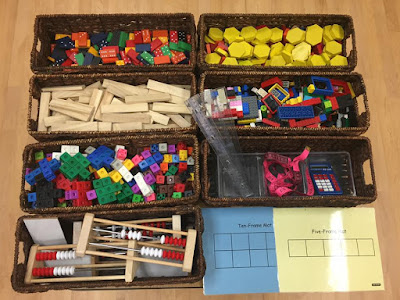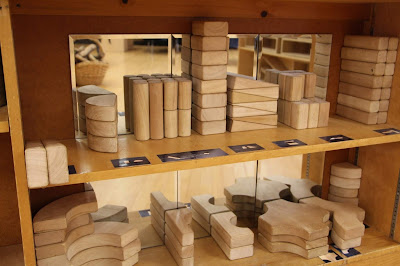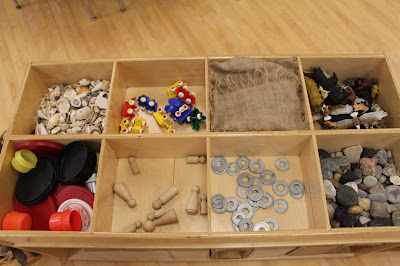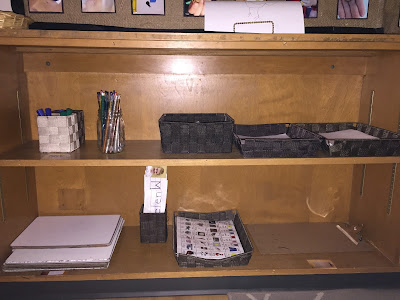Home » What Goes into a Classroom?
Posted by:
Categories
Date
So what exactly are some of the staple materials that we believe support our program in Kindergarten? Do you start with all of them out in the Fall? How do you introduce and support students in learning how to use them? Are toys welcome in a Kindergarten program? Can too many loose parts be overwhelming?
We wanted to walk through our thinking process and reflections over the past few years. As always, they are just things that work for us as a teaching team but hopefully our reflections will encourage further reflection and conversation within your team or classroom too.
We like to think of our classroom in the same way that you think about a grocery store. Around the perimeter of a grocery store you can find all of the essentials and necessities (e.g., produce, milk, eggs).
In our classroom, we use the perimeter to store, set out and share materials that will support our students in their engagement in play and learning.
An early phase of play and development is transportation. Young children seek out opportunities to transport and move materials and it often supports their play. We have intentionally created opportunities for children to transport materials throughout the classroom to use as tools and to support their play.
If the children are building and need a measuring tape, they know exactly where to find one! They also know that they can take that measuring tape and use it anywhere that makes sense in the classroom.
Of course, these routines take time and modeling to build. We take time in both small groups and during play to support our children in understanding how they may use the open ended materials or the standard measurement tools to support their learning.
Having our materials structured around the perimeter of the room and intentionally organized supports the children in quickly accessing them when they are needed and in providing them with a familiar structure each day. They always know where to find things that will support their play and learning because they are always in the same place!

Math Materials: This wall has baskets that contain different math manipulatives, tools, and open ended building materials.

Here is what is inside those baskets!

Our building wall is a collection of wooden unit blocks and large hollow wooden blocks. We use small photographs to support children in organizing the materials when tidying.

On the right side of the room you can see our building area along the wall is connected to our dramatic play area.

A small collection of loose parts that is between our building and dramatic play areas.

Collection of Writing Materials: We have clipboards, whiteboards, different types of paper, writing tools (pencils, twistables, markers), and name tags centrally located on a shelf.

Our Dramatic Play Area: is connected to our building area. This allows for students to transport materials between dramatic play and building.

Some of the materials in our dramatic play area. We include both loose parts and
plastic play food to provide balance in children’s selections.

Our Art Studio: We have a collection of crayons, pencil crayons, and markers sorted by colours.
We also have a variety of small art materials some found some purchased (e.g., lids, pom poms, string).
On the top we have scissors, glue, erasers, and tape.
We take time in the fall to slowly introduce and add materials to our classroom.
For example, in our art studio we simply start with pencils, crayons and paper. We slowly introduce new materials such as scissors or glue after using them with the children in the context of a small group. This supports those who have never been exposed to these materials in understanding how to care for them, how to use them and how they can access them during play.
Similar to this, we start the year with only a couple of loose parts. One year when we first started we have 15 baskets with different materials and loose parts near our building area. Very quickly, those bins were emptied into a beautiful mess on the carpet….although sorting is a great activity to engage with it became an overwhelming task for many of the young children still getting settled into routines and the community in our room.
What you decide to put out is a decision that you and your teaching partner will make! There is no right or wrong decisions here, it is more so about having that rich conversation together. One educator shouldn’t be making all of the decisions as to what to start the year with!
It is really helpful to talk about one area at a time reflecting on what might be needed in that area to get started and what/how you will gradually add the other materials. Having this conversation supports the strengthening of your partnership, rather than creating unnecessary conflict throughout the year. Being on the same page and having a conversation can really set you up to start the year with success!
Last but not least, our classroom often appears somewhat bare. This is absolutely intentional. Clutter and “too many” materials on the shelves, ledges and walls can create an environment that becomes overwhelming for both educators and children.
Every year we go through our cupboards, shelves, ledges and walls and make intentional decisions about what things make sense for our children and what things can be discarded, stored, donated, or recycled!
One thing we worked on was eliminating many of the ‘plastic’ toy sets (e.g., Fischer Price Zoo set). Although some of the play built language and perhaps relationships, we felt that we had similar materials that could get at the same play but with more depth and engagement. Instead, we may set out a basket of zoo animals and people with a basket of small wooden blocks, loose parts (e.g., rocks, shells). The imaginative play that comes from creating small worlds is really magical, open ended and often takes up less space!
Sign up for our mailing list if you would like to stay connected, learn about new ideas that can be implemented in your classroom, get access to exclusive material and offers.
We respect your privacy.
Copyright 2019 – PCE Connecting Learners. | Designed & Developed by BrandCo House.
